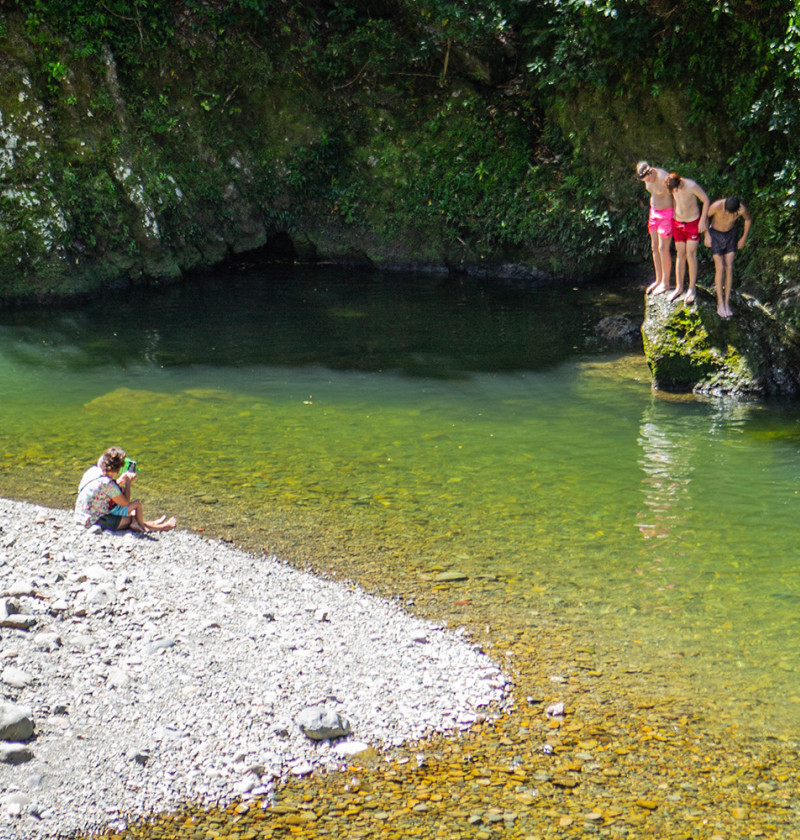Policy 3 and Clause 3.5: Integrated management ki uta ki tai


[…]
Policy 3: Freshwater is managed in an integrated way that considers the effects of the use and development of land on a whole-of-catchment basis, including the effects on receiving environments.
Ki uta ki tai is the recognition and management of the interconnectedness of the whole environment, from the mountains, springs and lakes, down the rivers to hāpua (lagoons), groundwater, wahapū (estuaries) and to the sea. The local interpretation will vary according to tangata whenua views. Some may use different concepts with similar meaning.
Ki uta ki tai informs how we give effect to Te Mana o te Wai. It is not defined in the NPS-FM, but clause 3.5 clarifies that councils must take an integrated approach. Policy 3 also requires that:
Freshwater is managed in an integrated way that considers the effects of the use and development of land on a whole-of-catchment basis, including the effects on receiving environments.
To give effect to the NPS-FM:
In line with the concept of ki uta ki tai, the NPS-FM applies to all freshwater (including groundwater) and, to the extent they are affected by freshwater, to receiving environments. This may include estuaries and the wider coastal marine area (see the section Clause 1.5: Application).
Councils should work together, alongside tangata whenua, to plan for growth while giving effect to Te Mana o te Wai. As well as regional plans, other RMA and non-RMA provisions can support integrated management, for example, stormwater management plans that identify future upgrades and expansions across regions and districts functions.
Although the NPS-FM does not mention other pieces of national direction specifically, councils’ still have obligations to implement all national direction instruments according to the terms of those instruments.
For example, councils must give effect to both the NPS-FM and the NPS-UD, in order to provide space for housing while protecting freshwater resources. Councils should give effect to the more general directives in the NPS-UD in a way that meets the more specific environmental protection directives of the NPS-FM. Giving effect to Te Mana o te Wai in an urban-planning context will require more strategic planning about where and what sort of development is appropriate. Reducing land available at one site, because of freshwater constraints, may result in more intensive housing elsewhere. Actively involving tangata whenua in these decision-making processes to give effect to Te Mana o te Wai and restoring the mauri of the wai is very important. It is also an opportunity to seek and apply mātauranga Māori perspectives to wider planning.
There will inevitably be interactions that need to be managed when considering how to give effect to the NPS-UD, the NPS-FM and the National Policy Statement for Highly Productive Land 2022 (NPS-HPL). The rules and targets set by councils to implement the NPS-FM must be met when implementing the NPS-HPL. And where required, there are special provisions in the NPS-HPL, which provides a pathway for the retirement of land from land-based primary production for the purpose of improving water quality.
For example, consenting decisions at the local level, made in relation to highly productive land (HPL), will need to consider the regional plan changes that set nutrient limits under the NPS-FM. The distribution of water and nutrient allocations should consider the current use of HPL for land-based primary production. Discussions may need to be had with territorial authorities as to the impact that enabling land-based primary production in a particular catchment may have on water quality, and as to whether limits and environmental outcomes for that FMU will be achieved.
Plan makers must consider the different values, outcomes and limits of a resource, and include provisions that have regard to these overlapping or competing demands.
In addition, clause 3.11(8) of the NPS-FM states that regional councils (when setting TASs as part of the development of regional plans) must, among other matters, consider the connections of water bodies to receiving environments (such as estuaries and coastal waters), and the respective environmental outcomes of these downstream receiving environments (see Clause 3.11: Setting target attribute states).
When developing regional plans, the ‘Integrated management’ heading is the strategic and integrated focus of the plan. This location provides for overarching policies relating to the strategic management of a region’s resources, such as of land, water and coastal environments.
For more information on regional policy statement and regional plan structures, see the guidance on the Ministry’s website.
Further information to support implementation:

Policy 3 and Clause 3.5: Integrated management ki uta ki tai
July 2022
© Ministry for the Environment